Yamanba is a mysterious and frightening figure that appears in Japanese folklore. Known as a supernatural being in the form of an old woman living deep in the mountains, she is said to attack lost travelers, and her terrifying stories have been passed down through generations. However, there are many mysteries surrounding the true nature of Yamanba, and it is said that she may be related to the legend of abandoning the elderly in the mountains. Additionally, Yamanba is not only known for her terrifying side but also has a maternal aspect and is considered a fertility deity capable of bearing thousands to tens of thousands of children upon encountering a man. This time, we will delve into the allure of Yamanba, who possesses such various facets.
What Kind of Yokai is Yamanba?
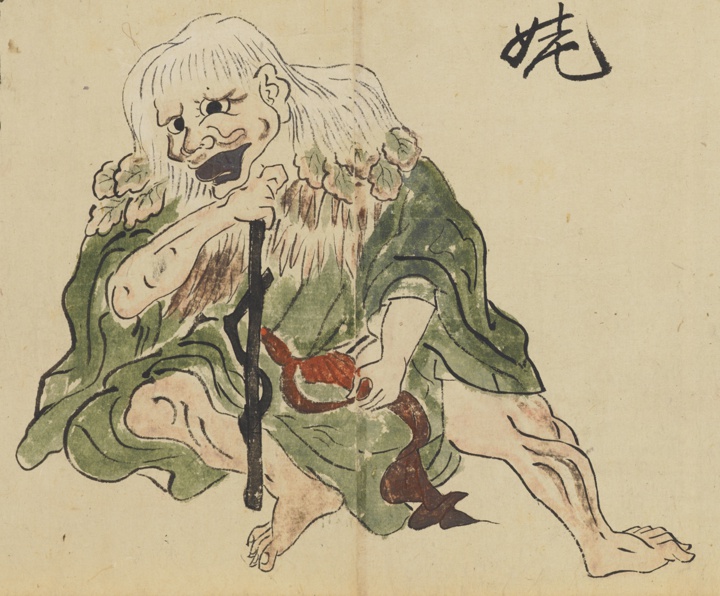
Yamanba is a yokai that appears in old Japanese folklore, depicted as a terrifying old woman living deep in the mountains. She is said to invite lost travelers into her home, only to kill and eat them once night falls.
Known as “yamanba” or “yamauba,” this yokai is depicted as an old woman with white hair, dressed in a kimono. There are well-known frightening episodes where travelers, lost in the mountains, find their way to her house, only to hear the sound of a knife being sharpened in the middle of the night, prompting them to flee.
While Yamanba has this terrifying aspect, she is also considered a sacred being that brings benefits to humans. Her dual nature is a particularly fascinating point in Japanese yokai folklore.
Did Yamanba Exist? The True Nature of Yamanba and Its Relation to Abandoning the Elderly in Mountains
The true nature of Yamanba is explained through various theories, and whether Yamanba truly existed remains unclear to this day.
- People living in mountainous areas or shrine maidens became yokai.
- Those abducted by mountain gods or mountain people became Yamanba.
- The legend of abandoning the elderly in the mountains suggests that abandoned old women turned into yokai.
- The custom of women secluding themselves in the mountains for childbirth or village festivals led to the emergence of Yamanba.
The idea that shrine maidens serving the mountain gods became Yamanba and possessed mysterious abilities is a convincing explanation. There are also theories that those kidnapped by mountain gods or abandoned in the mountains became Yamanba. The terrifying and violent nature of Yamanba, who kills and eats people, might stem from resentment towards being kidnapped or abandoned.
Additionally, there used to be customs where women secluded themselves in the mountains for childbirth or after being chosen for village festivals. The theory that these secluded women turned into Yamanba also exists. Despite their terrifying nature, Yamanba is said to have maternal aspects and the ability to conceive thousands to tens of thousands of children after touching a man only once. These abilities might have originated from the women who secluded themselves in the mountains.
Differences Between Yamanba and Onibaba
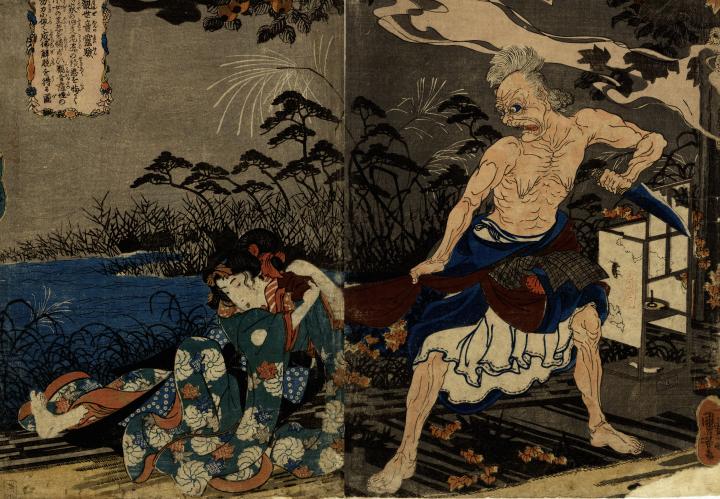
Onibaba is a yokai similar to Yamanba. Both are known as extremely cruel and violent yokai that eat people, but their main difference lies in their “habitat.”
Yamanba, as the name suggests, is a yokai in the form of an old woman living in the “mountains.” She resides deep in the mountains and is known for luring lost travelers and attacking them.
On the other hand, Onibaba is said to appear not only in the mountains but also in forests, in huts built in fields, and sometimes even in human settlements. Her appearance locations are very varied, and she is often witnessed over a broader range than Yamanba.
Furthermore, Onibaba is often considered to be more violent, with many legends describing her as extremely brutal, such as ripping open pregnant women’s bellies to eat their unborn babies. This extreme brutality is one of Onibaba’s characteristics.
Additionally, the name “Oni” (demon) in Onibaba indicates her ferocity. The name itself suggests fear, portraying her as an even more terrifying entity than Yamanba.
In this way, while Yamanba and Onibaba share similar characteristics as yokai, they differ in their habitats and levels of violence, each being depicted as a unique source of fear in folklore.
最後に山姥が登場する昔話をいくつか紹介して終わりにしたいと思います。昔話には山姥は悪役として登場することもあれば助けてくれる役として登場することもあります。それぞれどんなお話なのか見ていきましょう。
The Legend of Yamanba
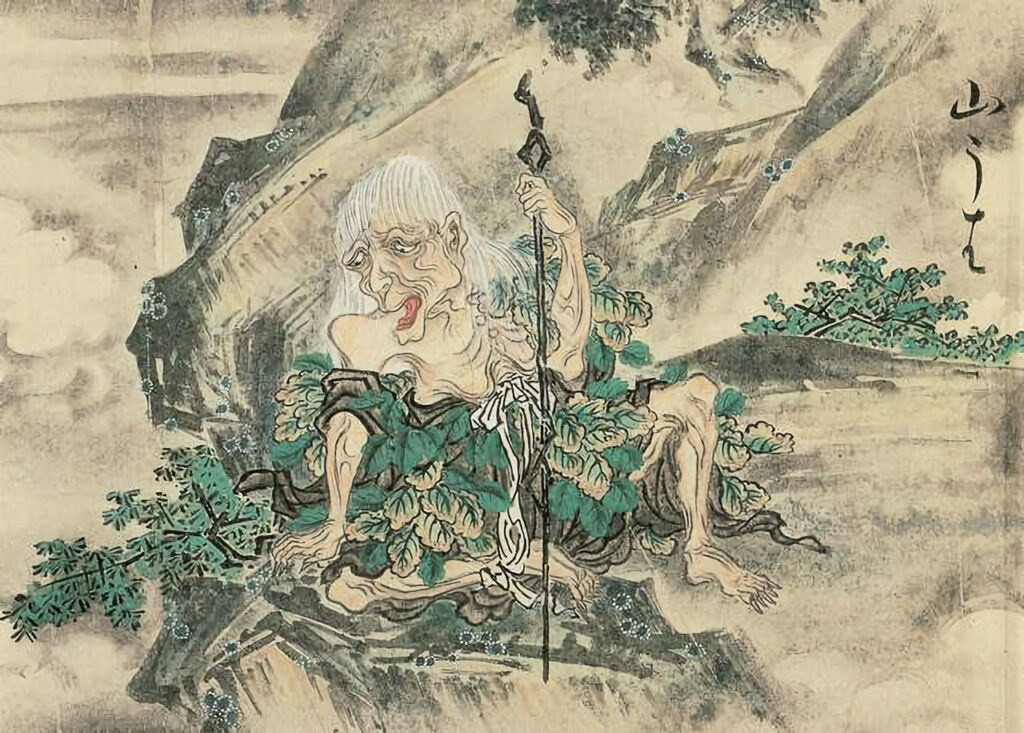
Finally, let’s introduce some folktales featuring Yamanba. In these stories, Yamanba sometimes appears as a villain and other times as a helper. Let’s look at what each story entails.
The Three Magic Charms
One day, a young monk wandered into the mountains and encountered a terrifying Yamanba. He ended up staying at Yamanba’s house for the night. With the help of the god of the toilet, he managed to escape during the night. As he fled, he threw charms given to him by his master behind him, which transformed into mountains, rivers, and fire, hindering Yamanba’s pursuit. The young monk safely returned to the temple, and Yamanba either perished during the chase or was defeated by the monk’s master’s wisdom. This Yamanba is known for her incredibly fast speed, chasing her prey with astonishing quickness. This is a classic example of a story where someone escapes from Yamanba, who is depicted as eating children.
The Wife Who Doesn’t Eat
A man wished for a wife who wouldn’t eat food. One day, his wish came true, and a woman who didn’t need food appeared and became his wife. However, the rice continued to disappear rapidly. When the man spied on her from the ceiling, he saw that his wife was eating rice balls through a mouth on her head. When he tried to separate from her, she tried to take him away in a bucket to the mountains, but he managed to escape. This story has versions that explain the origin of the May festival and the proverb “Kill a night spider, even if it looks like a parent.” This Yamanba is also depicted as a glutton and very fast. In some versions, the true form of Yamanba is a spider.
The Horse Handler and Yamanba
In this tale, Yamanba appears and steals fish that a horse handler is transporting. Yamanba is depicted as a great glutton with incredibly fast feet. Sometimes, the handler escapes by climbing a tree and Yamanba drowns herself by jumping into a pond, mistaking her reflection for the handler. Often, the handler escapes to Yamanba’s house, cleverly consumes her rice cakes and sake, and eventually defeats her. In some stories, Yamanba’s true form is a spider. According to Kunio Yanagita’s “Life in the Mountains,” the characteristics of being fast and gluttonous are common traits of Yamanba in folklore.
Nukafuku and Rice Fuku
Also known as “Rice Fuku and Millet Fuku,” this story involves two sisters who go chestnut picking. The elder sister’s bag has a hole, preventing it from filling with chestnuts. The one who gives her a new bag might be their deceased mother or Yamanba. During a play, it is this mother or Yamanba who provides the elder sister with beautiful clothes. This Yamanba helps the protagonist and acts like a deity.
The Old Woman’s Skin
In the beginning, a daughter marries a snake to save her troubled father. She cleverly kills the snake and escapes. It is Yamanba who hides her. This Yamanba is actually the transformed spirit of a frog that the father had saved. She gives the daughter an old woman’s skin. The daughter, disguised as an old woman, gets a job as a firewood gatherer and catches the eye of a rich man’s son, eventually marrying him and living happily ever after.
Kintaro’s Mother
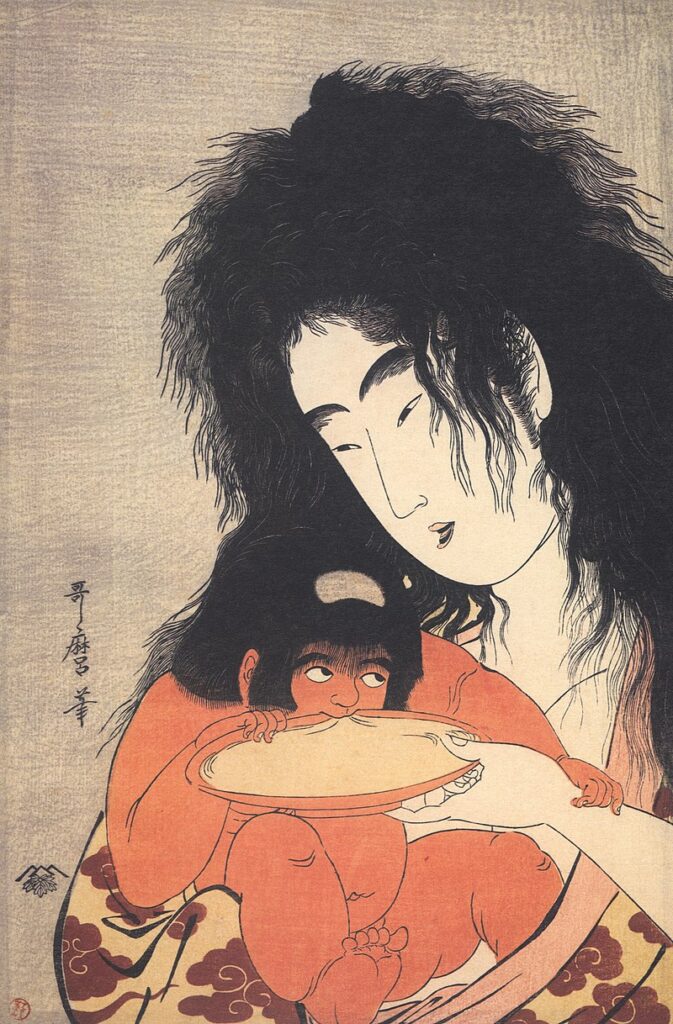
One of the most famous Yamanba legends is the story of Kintaro’s mother in Ashigara Mountain. Kintaro, also known as Sakata Kintoki, later becomes one of Minamoto no Yorimitsu’s Four Heavenly Kings.
According to “Konjaku Monogatari,” in 976, while Minamoto no Yorimitsu was traveling from Kazusa Province to Kyoto, he found a place in Ashigara Mountain where a red cloud was rising. Yorimitsu believed that a great person was hiding there and sent Watanabe no Tsuna to investigate.
At the location of the red cloud, there was an old woman and a young man of about 20 living in a hut. The old woman explained that in a dream, she had a connection with a red dragon, and the resulting child was Kintoki. Hearing this story, Yorimitsu felt he was an extraordinary person, gave him the name Sakata Kintoki, and made him a retainer.
Thus, Yamanba, while being a terrifying entity, also brings benefits to humans, possessing a dual nature that makes her a fascinating figure in Japanese folklore.
Summary
How was it? This time, we explored Yamanba. The legend of Yamanba has been passed down in various forms across Japan, and her terror and mystique continue to captivate people. Yamanba, with her dual nature as a terrifying demon woman and a maternal figure who brings blessings, is more than just a yokai; she is deeply connected to mountain worship and ancient beliefs. Through the stories of Yamanba, we can feel how human fear, reverence for nature, and faith in the sacred have been shaped over time.



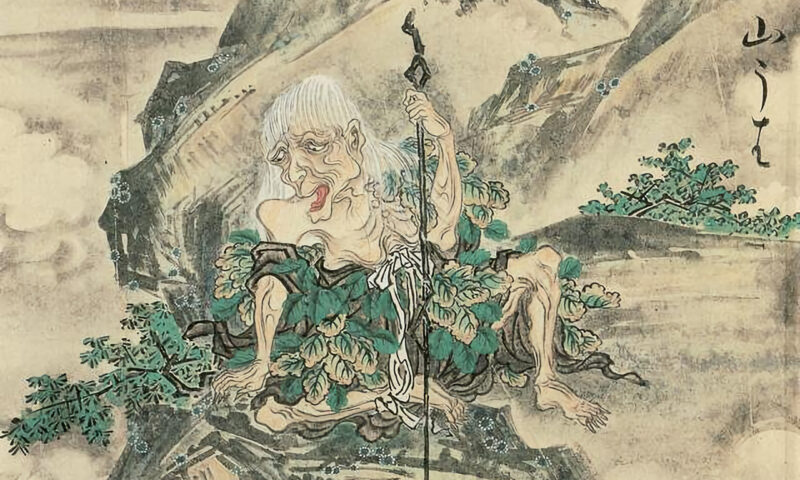
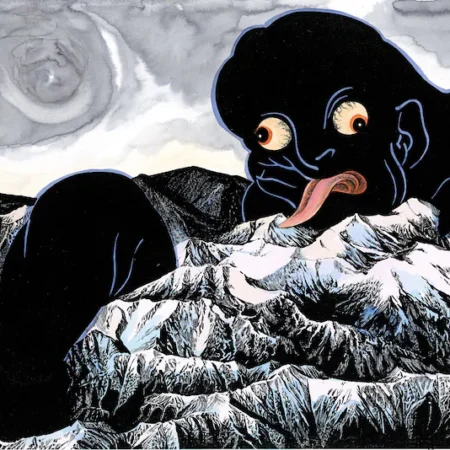

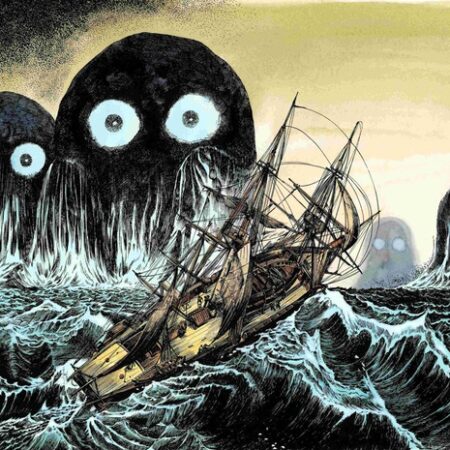
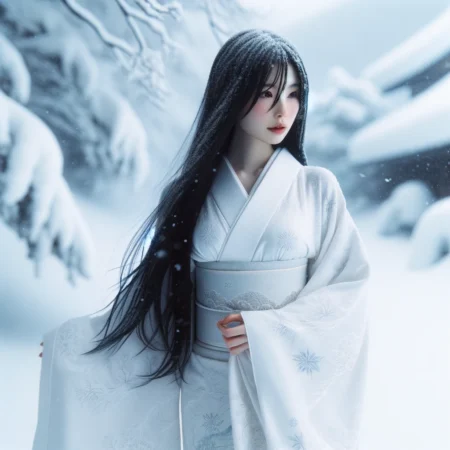
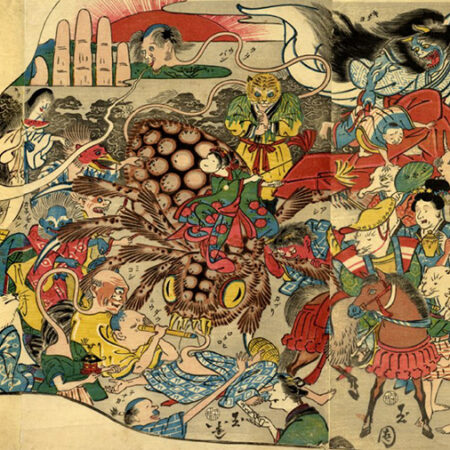

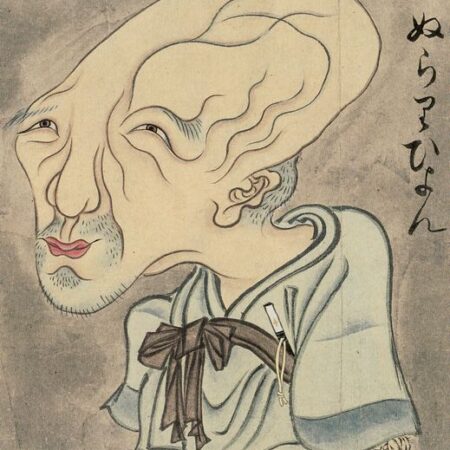


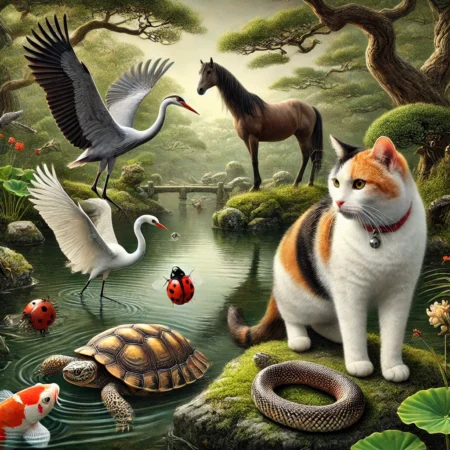
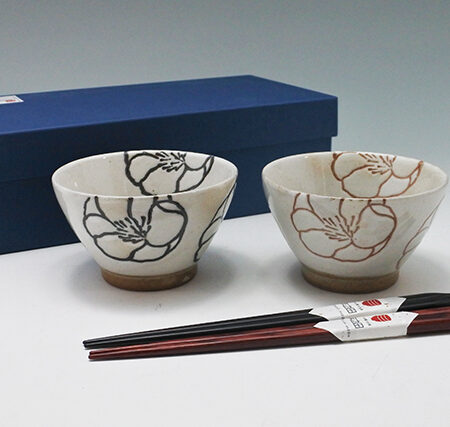
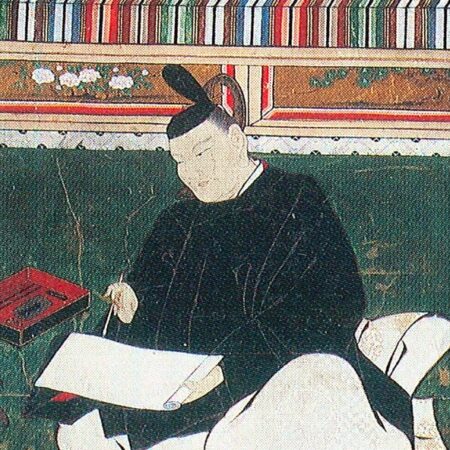
コメント